Click here and press the right key for the next slide.
(This may not work on mobile or ipad. You can try using chrome or firefox, but even that may fail. Sorry.)
also ...
Press the left key to go backwards (or swipe right)
Press n to toggle whether notes are shown (or add '?notes' to the url before the #)
Press m or double tap to slide thumbnails (menu)
Press ? at any time to show the keyboard shortcuts
Conflicting Evidence against a Dual-Process Theory of Moral Judgement
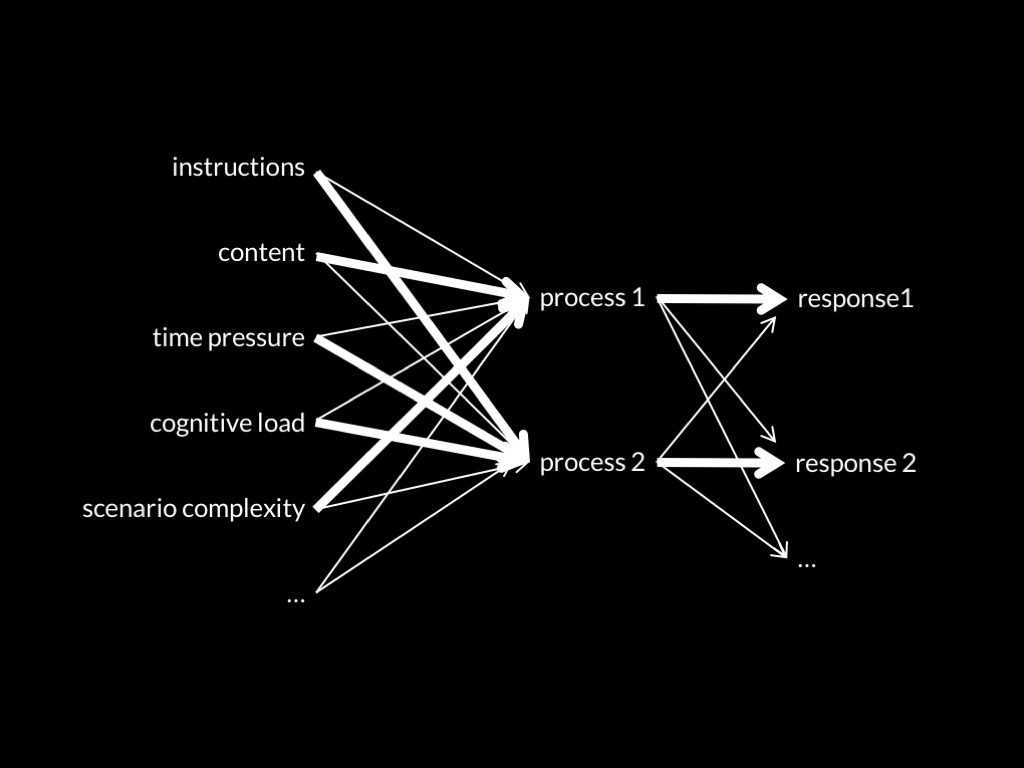

Dual Process Theory of Ethical Abilities (core part)
Two (or more) ethical processes are distinct:
the conditions which influence whether they occur,
and which outputs they generate,
do not completely overlap.
One process makes fewer demands on scarce cognitive resources than the other.
(Terminology: fast vs slow)
aux. hypothesis: The slow process is responsible for characteristically consequentialist responses; the fast for other responses.
aux. hypothesis: The slow process is responsible for characteristically consequentialist responses; the fast for other responses.
Suter & Hertwig, 2011 : yes
Bago & de Neys, 2019 : no
‘Submarine (4/60)
You are responsible for the mission of a submarine [...] leading [...] from a control center on the beach. An onboard explosion has [...] collapsed the only access corridor between the upper and lower levels of the ship. [...] water is quickly approaching to the upper level of the ship. If nothing is done, 12 [extreme:60] people in the upper level will be killed.
[...] the only way to save these people is to hit a switch in which case the path of the water to the upper level will be blocked and it will enter the lower level of the submarine instead.
However, you realize that your brother and 3 other people are trapped in the lower level. If you hit the switch, your brother along with the 3 other people in the lower level (who otherwise would survive) will die [...]
Would you hit the switch?’
Bago & de Neys, 2019 supplementary materials
first response under time pressure and cognitive load
second response under neither
aux. hypothesis: The slow process is responsible for characteristically consequentialist responses; the fast for other responses.
prediction: first response will be less influenced by outcomes than the second
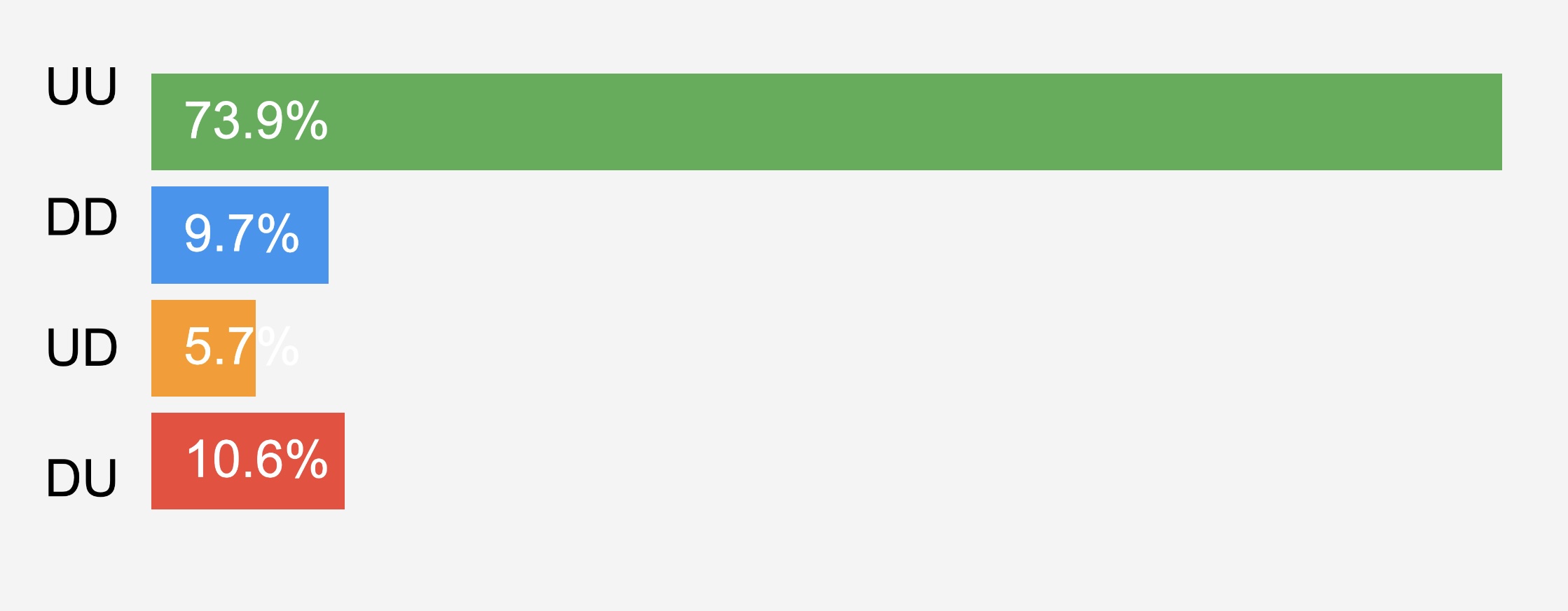
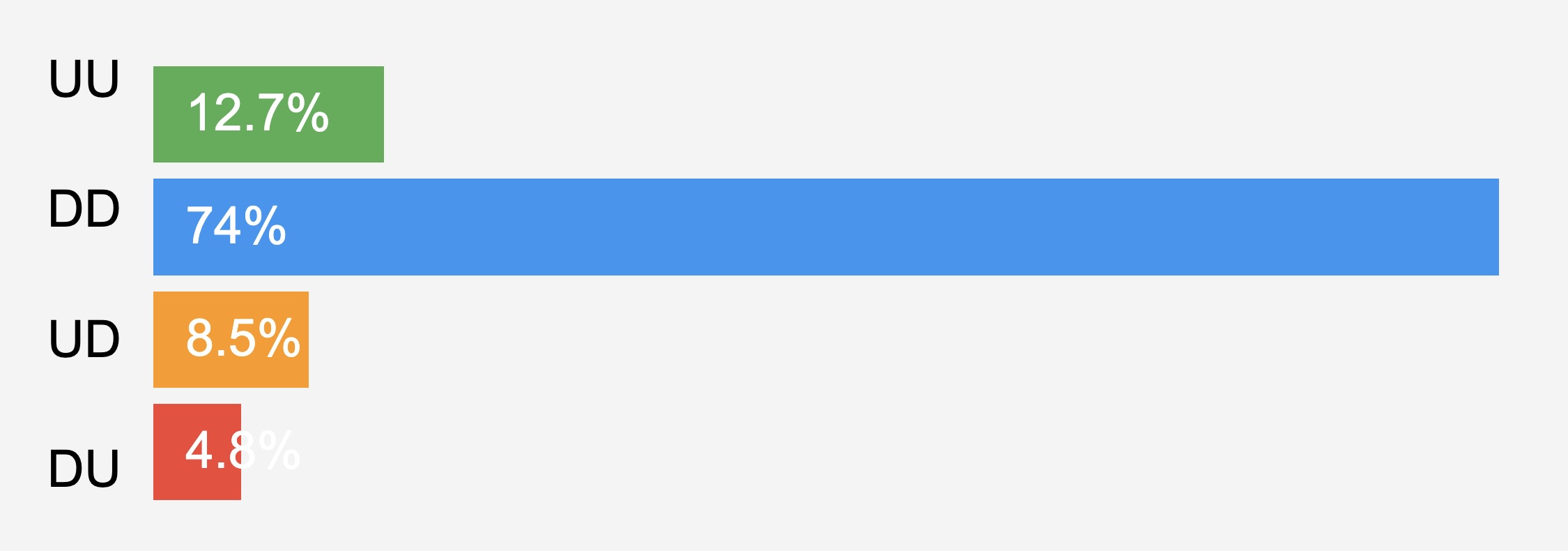
drawn from Bago & De Neys (2019, p. table 1)
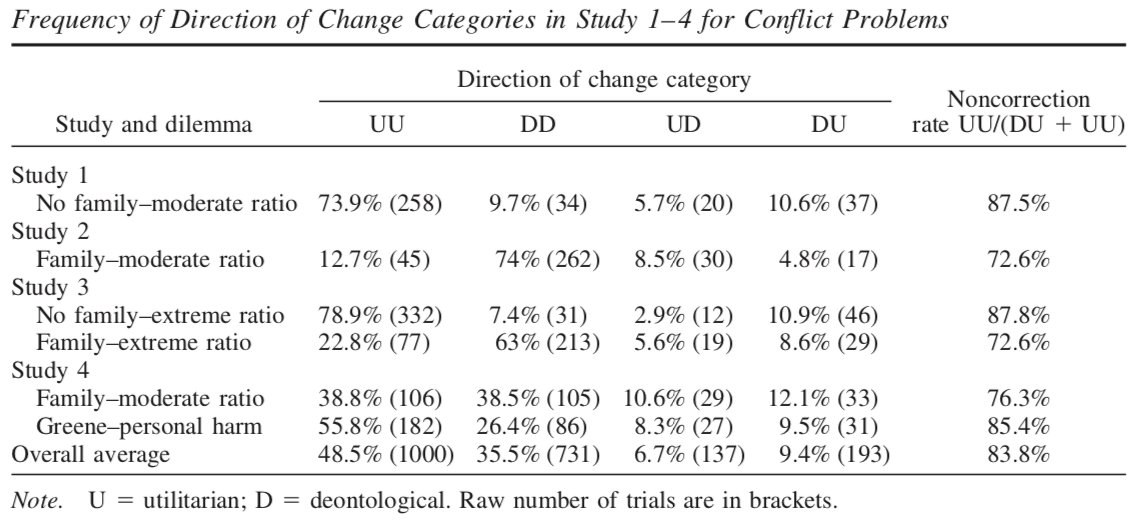
Bago & de Neys, 2019 table 2
‘Our critical finding is that although there were some instances in which deliberate correction occurred, these were the exception rather than the rule.
Across the studies, results consistently showed that in the vast majority of cases in which people opt for a [consequentialist] response after deliberation, the [consequentialist] response is already given in the initial phase’
Bago & de Neys, 2019 p. 1794
Objection 1: consistency effects? No!
Objection 2: No influence of fast process?
aux. hypothesis: only the slow process flexibly takes into account differences in the outcomes of an action
Suter & Hertwig, 2011 : yes
Bago & de Neys, 2019 : no
Rosas & Aguilar-Pardo (2020): converse
(more time pressure -> more consequentialist)
Vega et al. (2021): opposite patterns in Study 1 and 2

Dual Process Theory of Ethical Abilities (core part)
Two (or more) ethical processes are distinct:
the conditions which influence whether they occur,
and which outputs they generate,
do not completely overlap.
One process makes fewer demands on scarce cognitive resources than the other.
(Terminology: fast vs slow)
aux. hypothesis: The slow process is responsible for characteristically consequentialist responses; the fast for other responses.
How to evaluate a theory
1. Never trust a philosopher.
2. How good is the evidence?
a. Has the theory featured in a review? If so, does the review broadly support the theory’s main claims? ✓
b. Is there a variety of studies, from different labs, using different methods, which support the theory’s various predictions? ✓
c. Are there studies which falsify the theory’s predictions?
Evidence Greene (2014) cites includes:
- Suter & Hertwig (2011)
- Trémolière & Bonnefon (2014)
- Conway & Gawronski (2013)
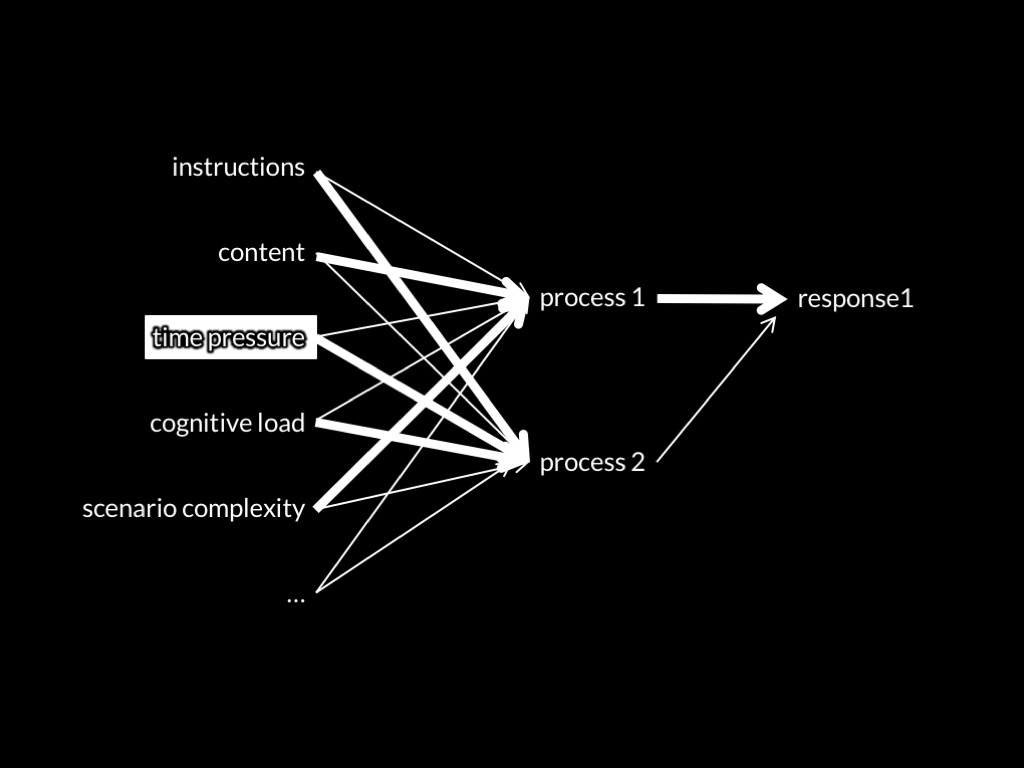
aux. hypothesis: The slow process is responsible for characteristically consequentialist responses; the fast for other responses.
Prediction 1: Limiting the time available to make a decision will reduce consequentialist responses.
Prediction 2*: Limiting the time available to make a decision will reduce sensitivity to outcomes.
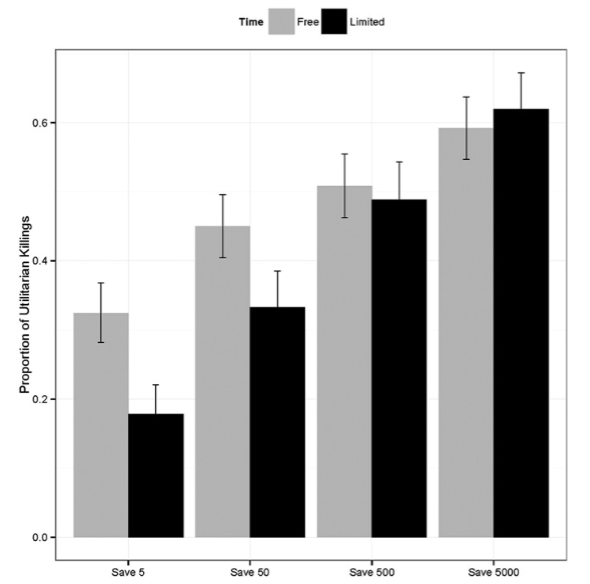
Trémolière & Bonnefon (2014, p. figure 4)
Prediction 2*: Limiting the time available to make a decision will reduce sensitivity to outcomes.

Gawronski & Beer (2017, p. figure 1); data from Trémolière & Bonnefon (2014)
Prediction 2*: Limiting the time available to make a decision will reduce sensitivity to outcomes.
Evidence Greene (2014) cites includes:
- Suter & Hertwig (2011)
- Trémolière & Bonnefon (2014)
- Conway & Gawronski (2013)
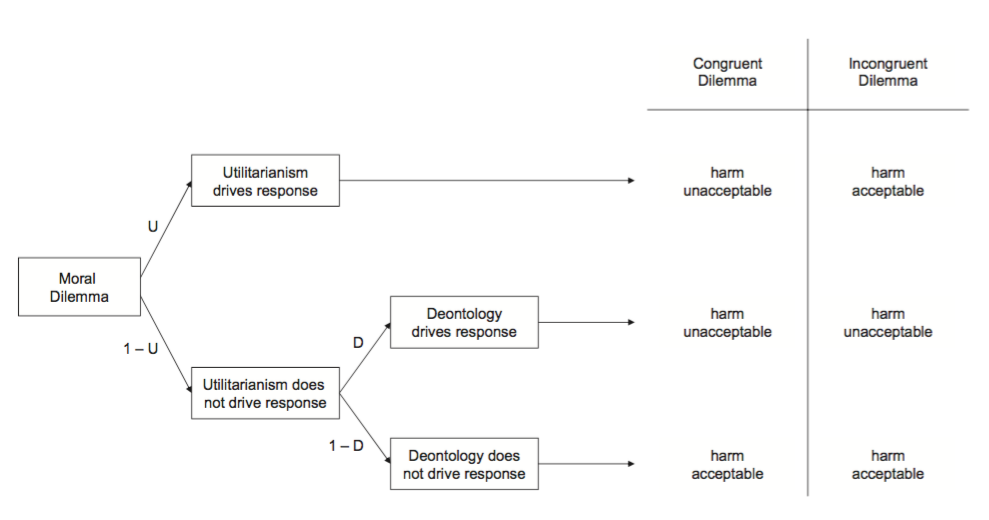

Conway & Gawronsky 2013, figure 1
Maybe people just prefer not to act when under time pressure?

Conway & Gawronsky 2013, figure 1
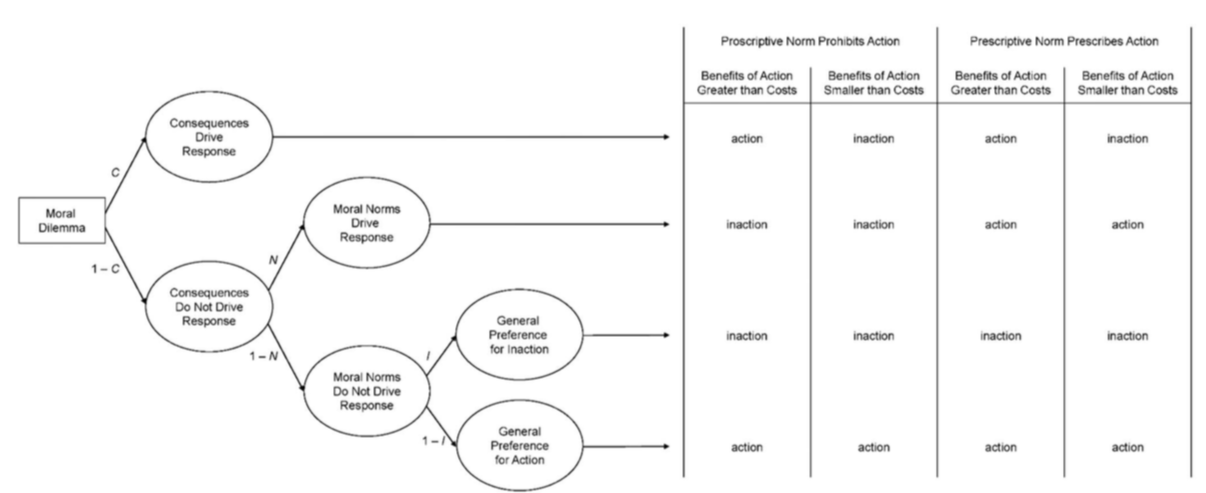
Gawronski et al, 2017 figure 1
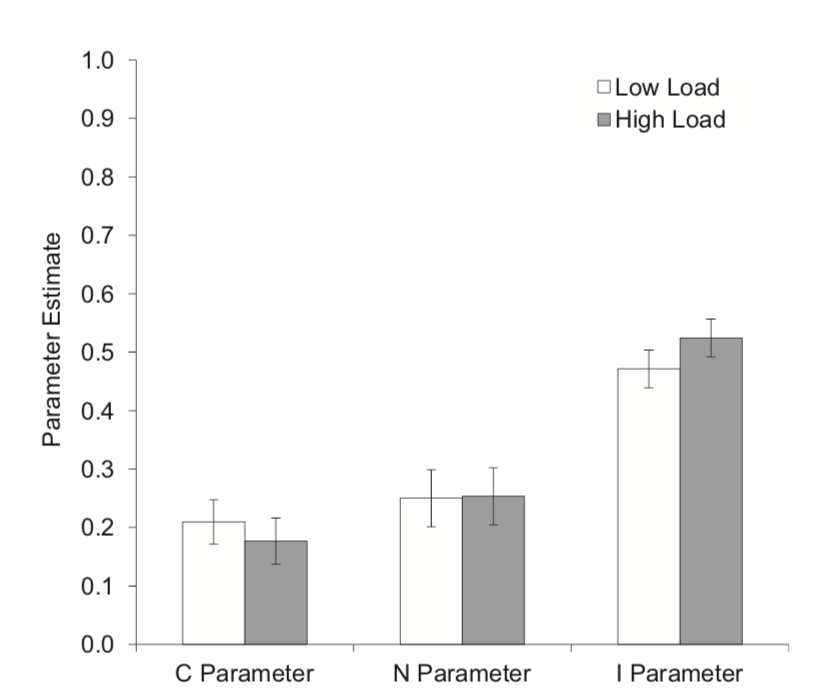
Gawronski et al, 2017 figure 4
‘The only significant effect in these studies was a significant increase in participants’ general preference for inaction as a result of cognitive load. Cognitive load did not affect participants’ sensitivity to morally relevant consequences’
‘cognitive load influences moral dilemma judgments by enhancing the omission bias, not by reducing sensitivity to consequences in a utilitarian sense’
‘Instead of reducing participants’ sensitivity to consequences in a utilitarian sense, cognitive load increased participants’ general preference for inaction. ’
Gawronski et al, 2017 p. 363
Evidence Greene (2014) cites includes:
- Suter & Hertwig (2011)
- Trémolière & Bonnefon (2014)
- Conway & Gawronski (2013)
How to evaluate a theory
1. Never trust a philosopher.
2. How good is the evidence?
a. Has the theory featured in a review? If so, does the review broadly support the theory’s main claims? ✓
b. Is there a variety of studies, from different labs, using different methods, which support the theory’s various predictions? ✓
c. Are there studies which falsify the theory’s predictions? ✓
aux. hypothesis: The slow process is responsible for characteristically consequentialist responses; the fast for other responses.
Suter & Hertwig, 2011 : yes
Bago & de Neys, 2019 : no
Gawronski et al, 2017 : no
Can we resolve the apparent contradiction by preference for inaction under time-pressure?


more research is needed?
What, if anything, can we conclude despite the mixed evidence?
Why is there an apparently conflicting pattern of findings?
dual-process theory of
judgement (e.g. risk)
no simple rule about their limits
fast processes use a variety of heuristics
moral cognition
just one simple limit (e.g. distal outcomes)
just one heuristic?
are these even different theories?
more research is needed?
What, if anything, can we conclude despite the mixed evidence?
Why is there an apparently conflicting pattern of findings?
On balance, it seems reasonable to
(i) deviate from the mainstream in not accepting any auxiliary hypothesis as firmly established while

Dual Process Theory of Ethical Abilities (core part)
Two (or more) ethical processes are distinct:
the conditions which influence whether they occur,
and which outputs they generate,
do not completely overlap.
One process makes fewer demands on scarce cognitive resources than the other.
(Terminology: fast vs slow)
aux. hypothesis: The slow process is responsible for characteristically consequentialist responses; the fast for other responses.
On balance, it seems reasonable to
(i) deviate from the mainstream in not accepting any auxiliary hypothesis as firmly established while
(ii) provisionally accepting, in line with the mainstream, that the stripped dual-process theory will turn out to be true.
more research is needed?
What, if anything, can we conclude despite the mixed evidence?
Why is there an apparently conflicting pattern of findings?